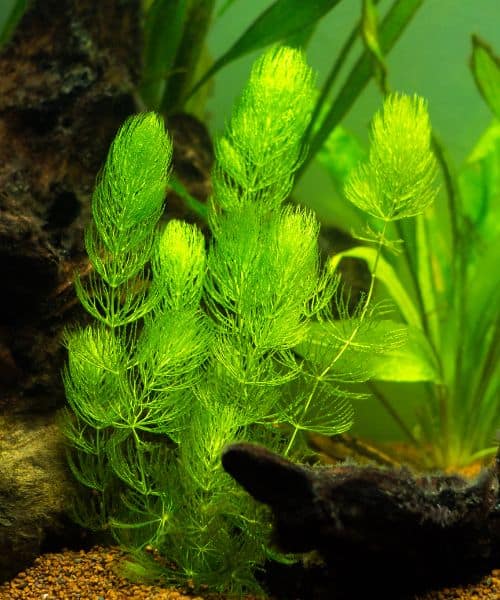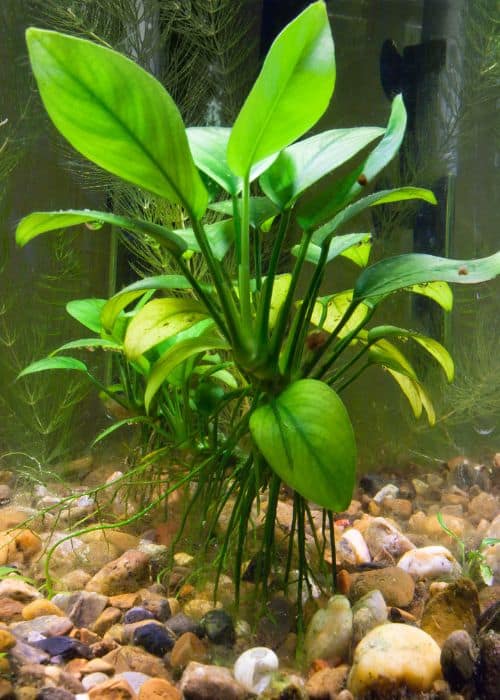A tank with water and a few fish – that’s mostly the setup if you are a newbie aquarist. With limited knowledge, you want to keep it easy and uncomplicated.
But as you progress in your aquarium hobby, you will feel that your bare and naked tank is boring and not satisfying anymore.
Having decorations can make your tank attractive. Commonly, beginners use plastic decorations to improve aesthetic beauty. However, plastic decorations don’t have significant benefits.
Instead of plastic decorations, why not use live aquarium plants?
We interviewed a couple of newbie aquarists and asked why they hesitate to use aquarium plants. Surprisingly, their response boils down to one answer: they are afraid they may not keep up with care and maintenance.
Thinking this way is a good mindset since you are after the welfare of your plants. You should know by now that the degree of care and maintenance varies per species.
What we recommend for you in this article are aquarium plants that only demand minimal care.
Benefits of Aquarium Plants
For you to be fully convinced with aquarium plants (and discard the possibility of having plastic decorations), here are their benefits:
Oxygen Production
Like any other plant, aquarium plants release oxygen through photosynthesis. What is good with aquarium plants is the immediate release of oxygen in the water which adds to the dissolved oxygen level required for fish growth.
With their photosynthetic nature, you need to place your planted tank that can be reached (not directly) with sunlight illumination or use a lighting system.
Natural Filtration
Aquarium plants have two modes of natural filtration: physical and chemical.
In physical filtration, aquarium plants trap debris suspended in the water. On the other hand, chemical filtration occurs when the roots and leaves of the plant absorb nutrients (like ammonia, nitrites, and nitrates) from fish waste.
Chemical filtration is significant since it prevents the concentration increase of nutrients that affects the growth of your fish.
Stop Algae Growth
As a by-product of chemical filtration, the nutrient-low waters of your tank discourage algae growth. Remember that algae also need nutrients to grow.
Provide Fish Refuge
Have you ever wondered why some fish do not swim around in a bare naked tank?
Fish need shelter, and the leaves of the aquarium plants provide a natural refuge. Under the leaves, they feel secure, and this entices them to swim around the branches and stems of your plant.
Best Beginner Aquarium Plants
The plants listed in this section are hardy in nature. It means they are resilient, tolerates a wide range of water parameters, will not simply die off and requires less care on your part.
Hornwort
Beginners should only keep aquarium plants tolerant to a wide range of water parameters, like the Hornwort (Ceratophyllum demersum).
Giving you a glimpse of how tolerant they are, Hornworts live across all continents except in the frigidly cold waters of Antarctica.
In your home aquarium, you can introduce Hornworts by allowing them to float at the surface or plant them in the substrate. They present a soothing greenery, and your fish will love it. Some of your fish may take refuge, while some may eat them, like Angelfish and Gourami.
If your tank has a lighting system, then expect fast growth. You should be aware of this since Hornworts can cover the surface and deter the growth of smaller plants.
Java Fern
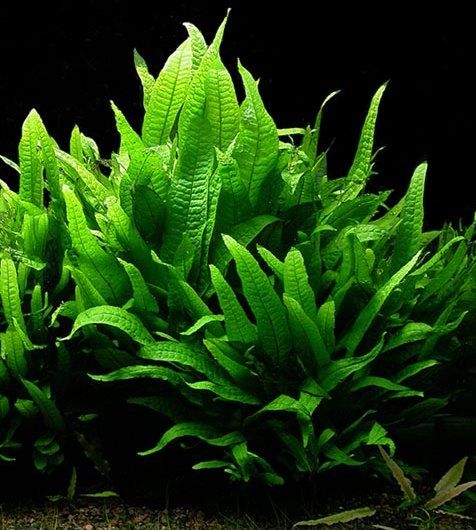
Consider having the Java Fern (Microsorum pteropus) if you are looking for a background plant for your medium or large-sized aquarium. The plant has three varieties, and your choices include the narrow leaf, needle leaf, or trident leaf.
Planting Java Ferns can be done in several ways, like floating or rooted in the substrate. For newbies, we recommend attaching them to driftwood using a string.
Be aware that Java Ferns have rhizomes or modified branching stems where roots and leaves sprout. If you plant them in the substrate, it will take time before they can reproduce new leaves.
Anubias
If you have a new tank and accidentally poured too much substrate, do not redo it since it can become the perfect environment for keeping Anubias.
All species of Anubias are great for beginners, and the only thing newbies are required to prepare is their substrate. In setting your new tank, pour the substrate until it reaches 2 inches thick, pour water, allow a few hours to settle, then plant your Anubias.
If you have a gravel substrate, expect fast spreading of Anubias roots since this is their preferred habitat.
Bacopa
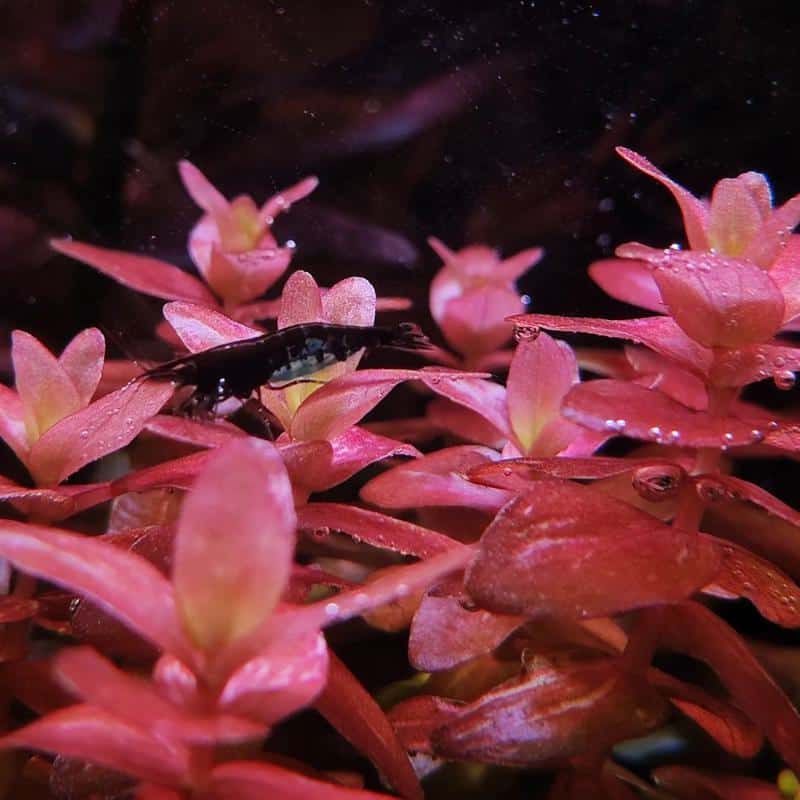
Is it possible to keep land plants in a tank? Yes, and that is the case with Bacopa (Bacopa caroliniana). This stem plant is commercially grown in plant farms where some of them are intended for aquarium display.
Although considered a land plant, the aquarium-keeping of Bacopa requires minimal care. Expect their old leaves to die just days after you planted them. But do not panic as the aging leaves are not adapted for underwater growth.
Wait for a couple of days and you will see new leaves sprouting out, which in this case, are now adjusted for underwater living.
Cryptocoryne
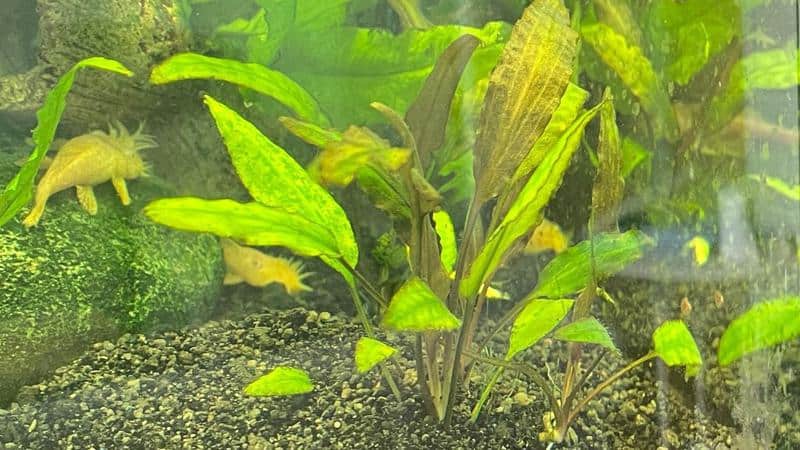
Water parameters are unstable in a recently installed aquarium. In case you have a new tank and want to stock it with an aquarium plant that automatically adjusts to its new environment, then you will not go wrong with Cryptocorynes.
Also called Water Trumpet, the long trumpet-shaped leaves of Cryptocoryne may wither and rot in an event called Crypt Melt. But do not worry as this is all part of its adjustment period. As the plant adjusts itself, new leaves are produced and grow vertically towards your light source.
While there are many species of Cryptocoryne, what we recommend for beginners are Cryptocoryne wendtii and Cryptocoryne lutea as they are the hardest species of their family.
Be aware that Cryptocoryne does not like to be transferred once it has adjusted to its new home. Otherwise, moving them will result in another crypt melt.
Vallisneria
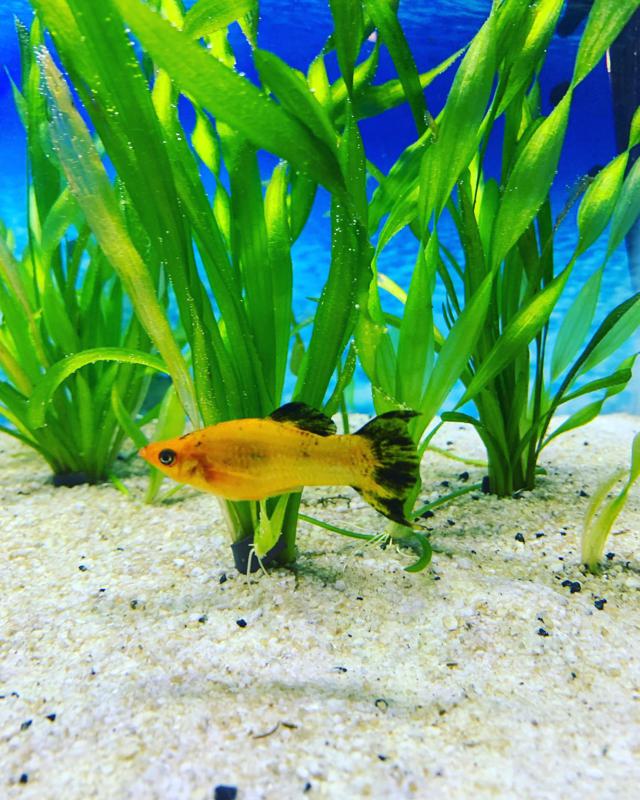
Do you want your tank to have a grass-forest theme? Vallisneria (Vallisneria spiralis) can do this for you.
After you purchase and plant them in the aquarium, you will notice that it is short and saggy. But when your aquarium has moderate lighting, expect its narrow leaves will grow vertically tall until it reaches the surface.
The only thing you need to prepare as a newbie is their substrate. Vallisneria requires a deep substrate, and having a 2-inch deep substrate will help stabilize its vertical growth.
Marimo Moss Balls
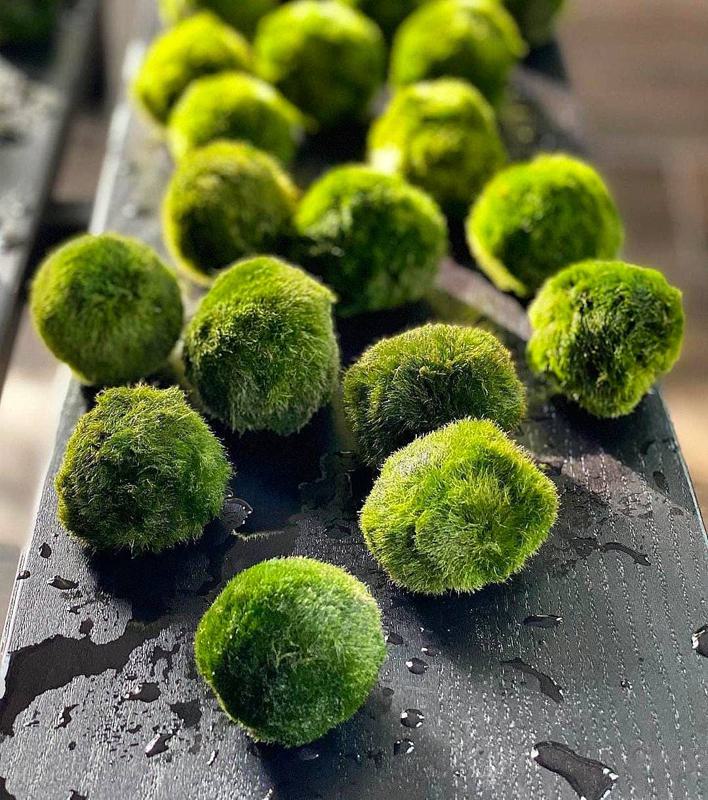
The Marimo Moss Ball (Aegagropila linnaei) is one of the cheapest and easiest aquarium plants. Once you place them in the tank, you can leave them alone and only handle them during a water change.
Since they are a collection of algae (yes, they are not moss), you need to roll them to maintain their ball shape and expose their underside to light.
In case you forget to roll them during a water change, their round shape can disintegrate and flatten down.
But no need to worry. You can still roll them up or unroll them totally and place them on top of driftwood to create a small forest tree, or should we say, an underwater bonsai.
Amazon Sword
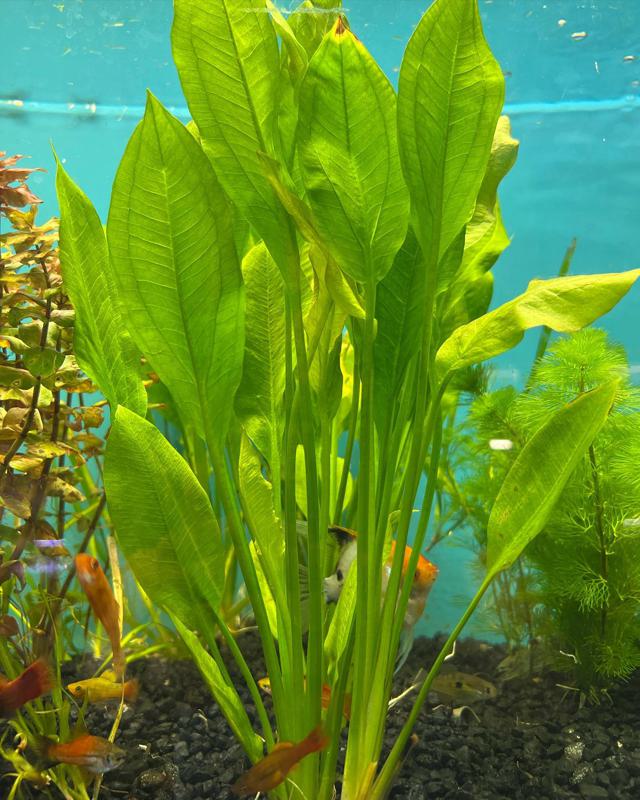
Not all newbie aquarists use basic aquariums. Some are privileged to have a tank with equipment and accessories.
If your tank has a heater and a lighting system, you should try keeping an Amazon Sword (Echinodorus grisebachii).
The heater will help mimic their wild tropical habitat where they prefer water temperatures anywhere from 72 to 82 F (22 to 28 C), while the lighting system emits solar energy needed for their photosynthesis. Be aware if you have this setup, they can grow fast, and trimming your Amazon Sword may be required.
With some maintenance to do, taking care of Amazon Sword is a great way to pump up your experience in handling aquariums plants.
Anacharis
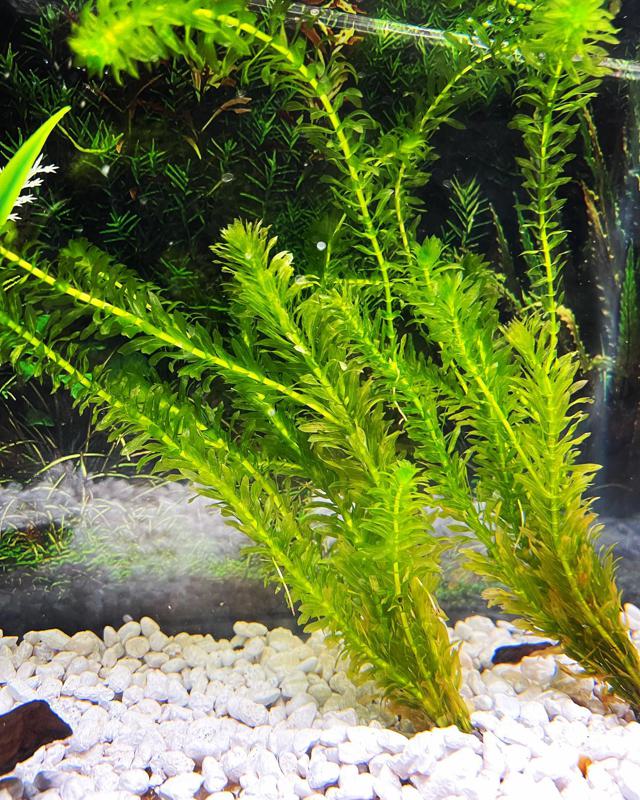
If you want to gain more experience with aquarium plants, we suggest you try Anacharis (Elodea canadensis). Although they are still generally easy to care for, you need to be aware of their preferred lighting environment.
What Anacharis prefer is moderate lighting, where you can see the blooming of their dark green leaves. However, if you place them under low light, they will shed off and die.
On the other hand, Anacharis can thrive in intense lighting, but it will promote algae growth in return. For specific light requirements, Anacharis needs 2 watts of light per gallon of water.
Brazilian Pennywort
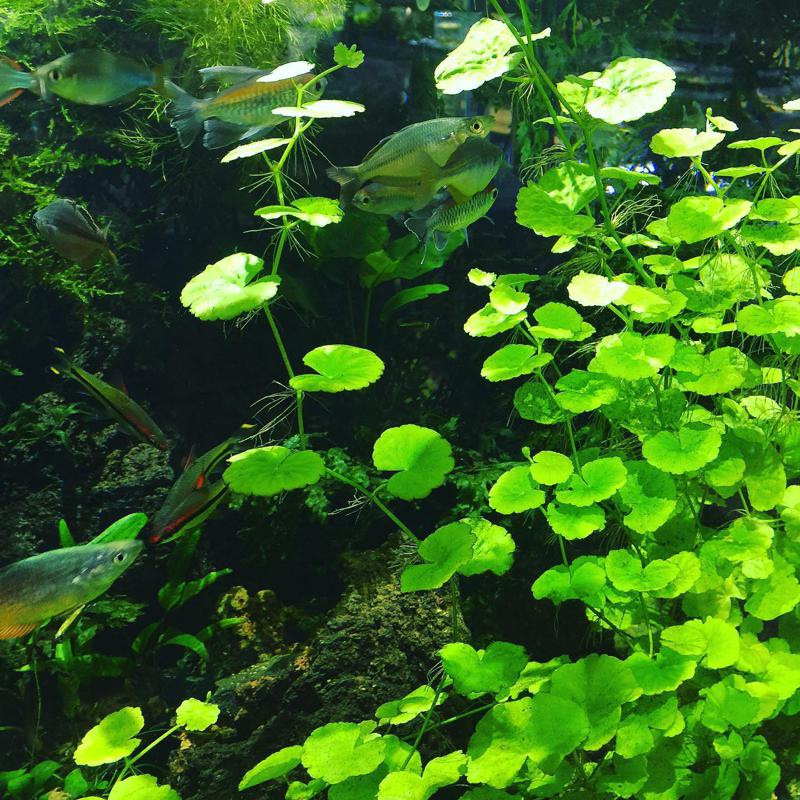
Growing aquarium plants can be demanding if you are in a country with limited sunlight or a newbie aquarist who does not want to use a lighting system. Well, not with Brazilian Pennywort (Hydrocotyle leucocephala).
This low-light aquarium plant is versatile. It can grow in varying water temperatures and can be planted in any substrate, including driftwood.
Betta Bulb
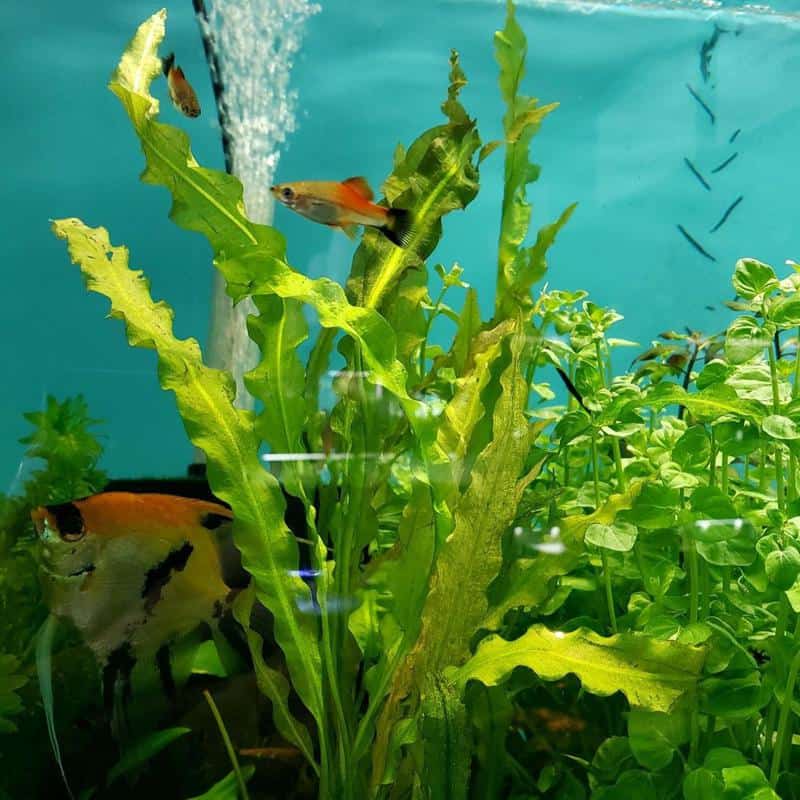
Also named Ruffled Sword Plant, the Betta Bulb (Aponogeton crispus) requires almost no maintenance.
When you buy them in the pet shop, they are often placed in plastic pots. Remove them from the pot and plant them directly on the substrate.
A few days after planting, you will see how their tall and wavy leaves stand gracefully in your tank, making it a great centerpiece.
Just be aware that Betta Bulb undergoes a dormant period. This means that they will not grow and some of their leaves will wither. Do not worry if you see this since the plant bounces back and produces new leaves, and in the long run, flowers.
Ludwigia
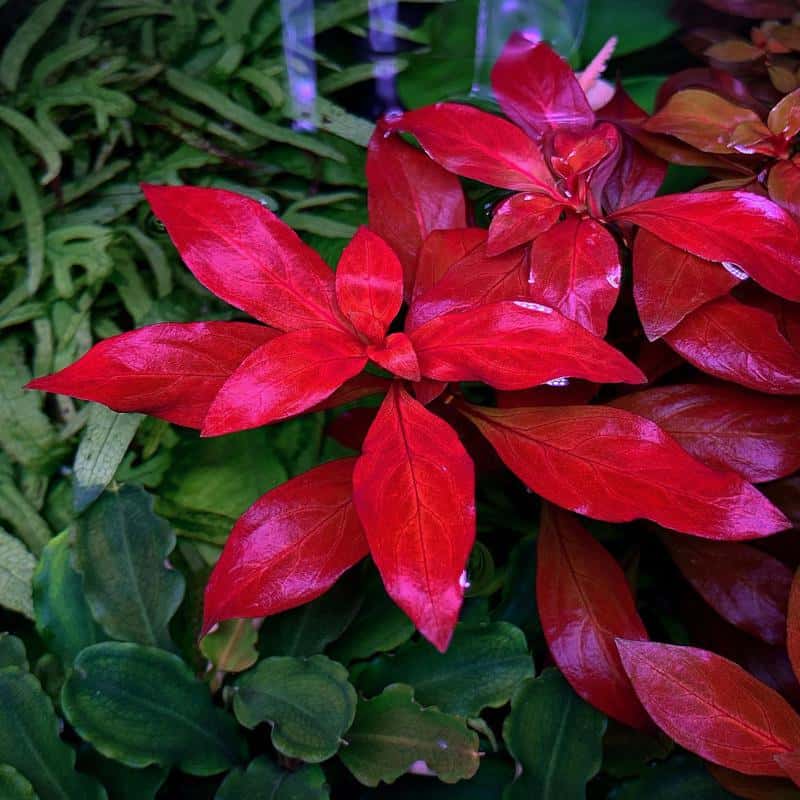
Not all aquarium plants are colored green. Some are colored red, like the Ludwigia (Ludwigia repens).
For beginners, do not be surprised if their leaves turn green. That is their natural color when they are exposed to low or moderate lighting. But if you want the red color to come out, we recommend you expose them to intense lighting.
Do not expect the instant changing of colors as it usually takes a few days for the leaves to turn red.
Easy Carpeting Aquarium Plants
As you gain experience in keeping aquarium plants, you will come to a point where hiding your substrate is not just about being neat but also an opportunity to handle a new type of aquarium plant: the carpet plant.
By now, you are aware that most aquarium plants grow vertically toward the surface. But not all. Carpet plants grow horizontally, and their parallel growth may partially or cover the entire surface of your substrate.
While this sounds intimidating as these plants are new for you, do not be, as the species listed in this section are still easy to care for.
Java Moss
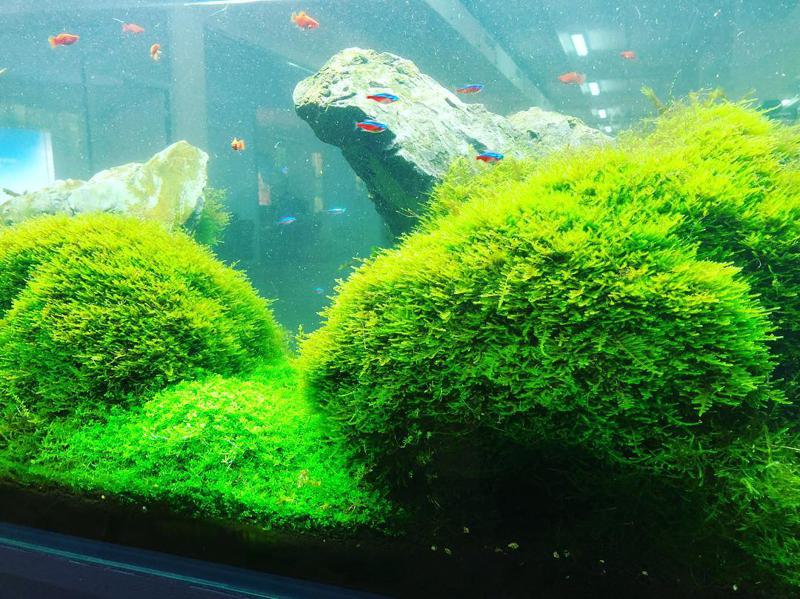
The Java Moss (Taxiphyllum barbieri) is so hardy that some have considered it the undying species. Aside from adapting to different lighting intensities (from low to high), this crawling plant has a temperature range wider than any other aquatic plants, from 70 to 85 F (21 to 29 C).
From sand to gravel, the Java Moss can grow in any substrate, making them great for aquascaping. For newbies, we recommend planting them directly in the substrate and allowing them to spread naturally.
If you want more challenges, try setting it on driftwood and see how they crawl and cover it over time.
Dwarf Sagittaria
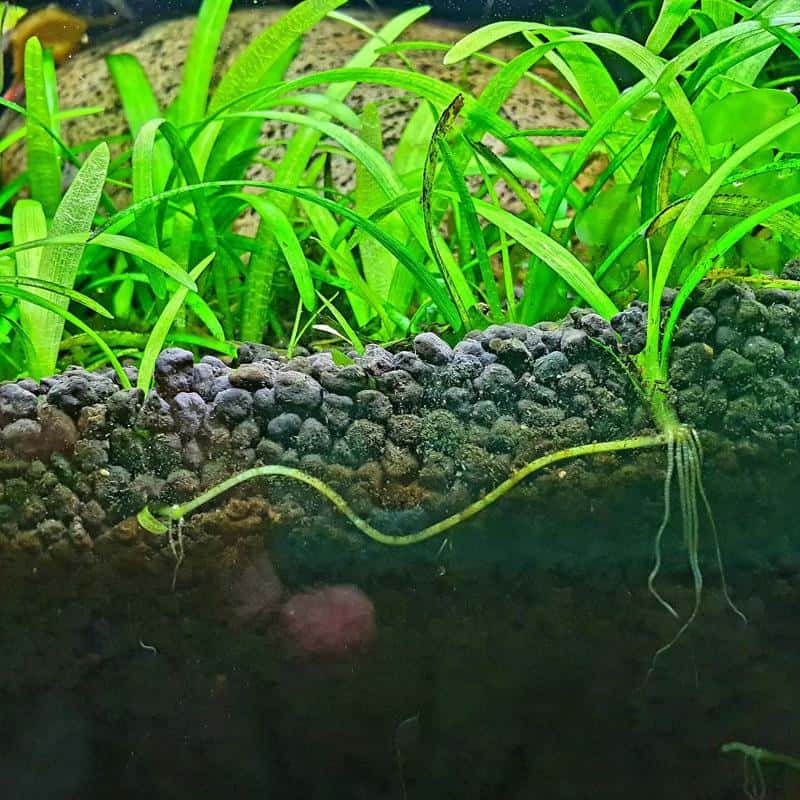
If there is a representation for carpeting plants, it should have a grass-like growth, like the Dwarf Sagittaria (Sagittaria subulata).
Initially, you need to plant each shoot individually with some spacing in between. In growing and reproducing, the Dwarf Sagittaria spread runners (or modified stem) across the substrate where new shoots will grow.
The good thing for Dwarf Sagittaria is they can train newbie aquarists on how to use different light intensities to their advantage.
If you want this carpeting plant to grow tall, then use low-intensity light. But be ready for some maintenance work as trimming is required. On the other hand, and surprisingly, high-intensity light makes this carpet plant short and small.
Dwarf Hairgrass
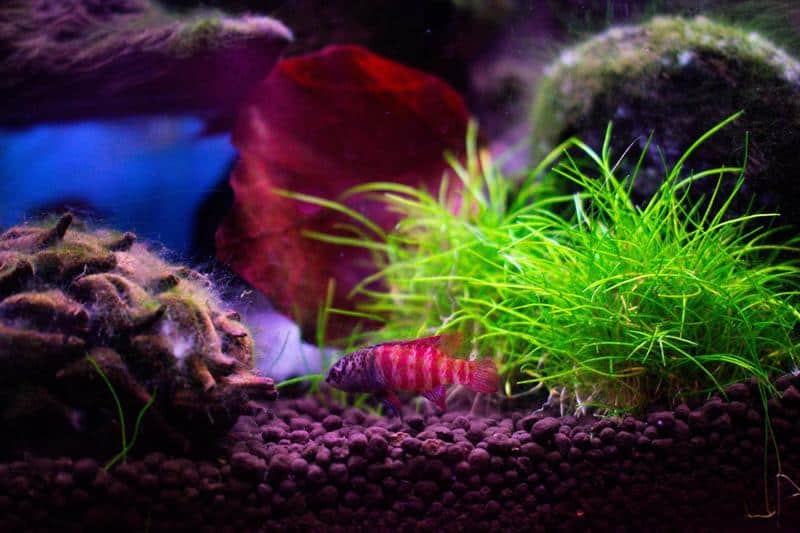
The Dwarf Hairgrass (Eleocharis parvula) is one of the few carpeting aquarium plants for tanks with dark sand or rocks.
The reason for this is the contrasting effect. From the darkness of your substrate, the color will slowly show up from its light green branches and enhance into dark greenery as it reaches its leaves.
For newbies, you only need to trim them once in a while. But if you use a lighting system, Dwarf Hairgrass will grow fast, and the need for trimming can become frequent.
Dwarf Baby Tears
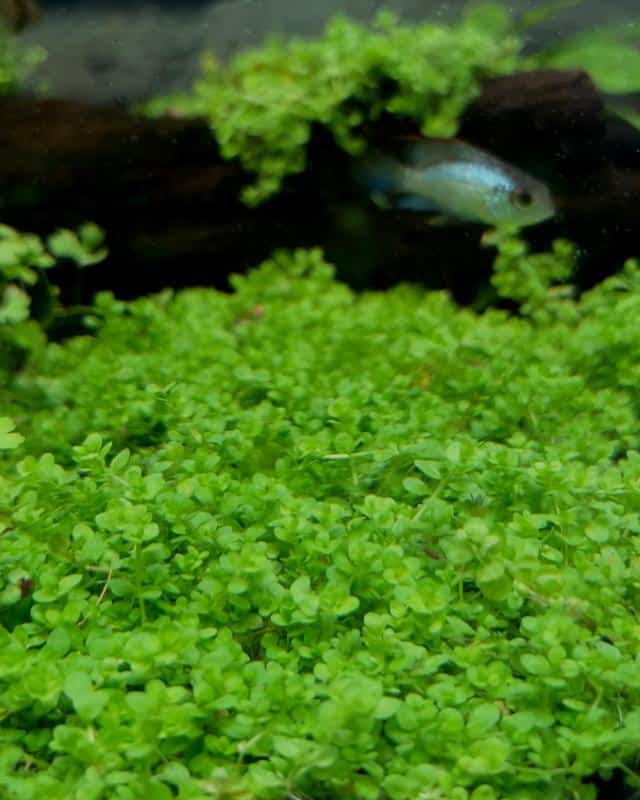
Not all newbies like grass-like carpet plants since they can become demanding especially during cleaning. It is why some choose carpet plants that are low and neat, like the Dwarf Baby Tears (Micranthemum callitrichoides).
They grow well in normal tank conditions and their small circular leaves will create lush foreground greenery. In some cases, their leaves will produce pearls.
Well, they are not technically pearls, but an oxygen bubble which indicates that the plant has been feeding a good amount of nutrients from the water.
Monte Carlo
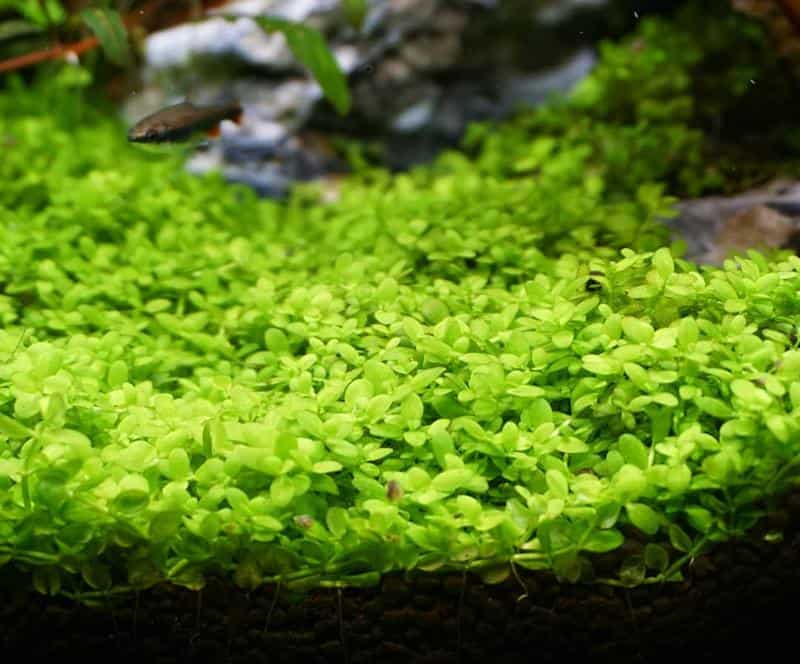
The Monte Carlo (Micranthemum tweediei), is a fellow carpeting plant ideal for beginners. Being a close relative of the Dwarf Baby Tear, they need the same water condition and maintenance.
The only difference between them is that Monte Carlo is larger with distinct branches, darker in color, and grows faster than Dwarf Baby Tear.
This leads us to the question: Can you keep Monte Carlo and Dwarf Baby Tear side by side?
Technically, you can. However, we recommend you only choose one of them to carpet your substrate. Otherwise, keeping them simultaneously will lead to fierce competition for nutrients and space.
Christmas Moss
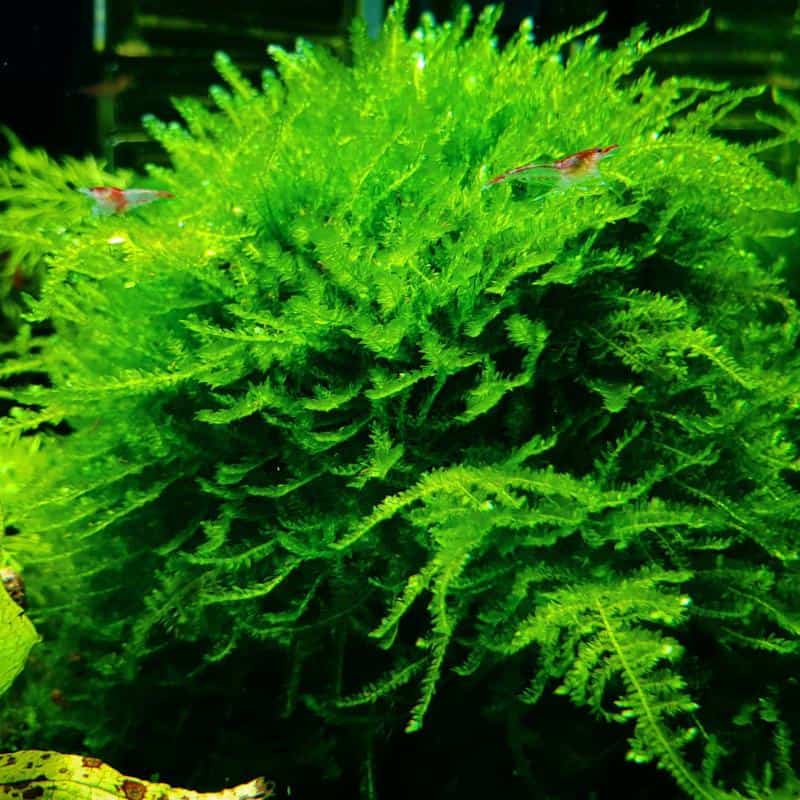
Not grassy-like, not mossy, but decoratively piny in appearance. That’s your Christmas Moss (Vesicularia montagnei).
When you buy them in pet shops, they are often matted and all you need to do is place them in the substrate of your tank. Otherwise, if it is clumped and unarranged, you need to attach them to a solid object (like driftwood).
Do not expect that it will look like a Christmas tree when they grow. However, if you look closely at their branching stems, you will notice how their leaves closely resemble those of Evergreen trees.
Read More:
- Best Aquarium Plants with Flowers
- Best Carpet Plants for Aquarium
- Best Low Light Aquarium Plants
- Best Aquarium Plants That Grow Tall
Easy Aquarium Plants: FAQs
Do Aquarium Plants Need CO2 Supplement?
At the very least, No. Your tank already has a natural level of CO2 coming from your fish and this is sufficient to complete their photosynthetic activity.
However, injecting CO2 supplements is like giving vitamins to your plants. It will boost their growth and it is when their desired traits will come out, like massive growth, fully-bloomed leaves and stunning colors.
What Is the Most Hardy Aquarium Plant?
While we have presented several species of hardy aquarium plants, it is the Java Fern that is considered the most hardest. With their wide range of thriving conditions, some aquarists consider the Java Fern as immortal and unbreakable.
Just imagine this: Java Fern can survive even if there are highly active fish known to destroy and eat plants.
Why Do My Aquarium Plants Keep on Dying?
Something must be wrong with the physical and chemical properties of water. Given that you planted and handled them accordingly, you should frequently check your water parameters.
The problem can be associated with wrong water temperature, incorrect light intensity or lack of water nutrients, where in this case, you can supplement it with CO2 or add liquid fertilizers.
Conclusion
We hope that you learn a lot from our article and realize that keeping aquarium plants is basically not really hard.
Now, stop reading. Choose and keep the aquarium plant you like in our list. Apply what you have learned and convert it into a skill. After all, when you already have the experience in keeping easy aquarium plants, you can now level up and try more challenging plants.
Do not be a beginner forever.

